Cricket
Under-19 Women’s Twent20 World Cup:16 teams, 4 groups, 2 places
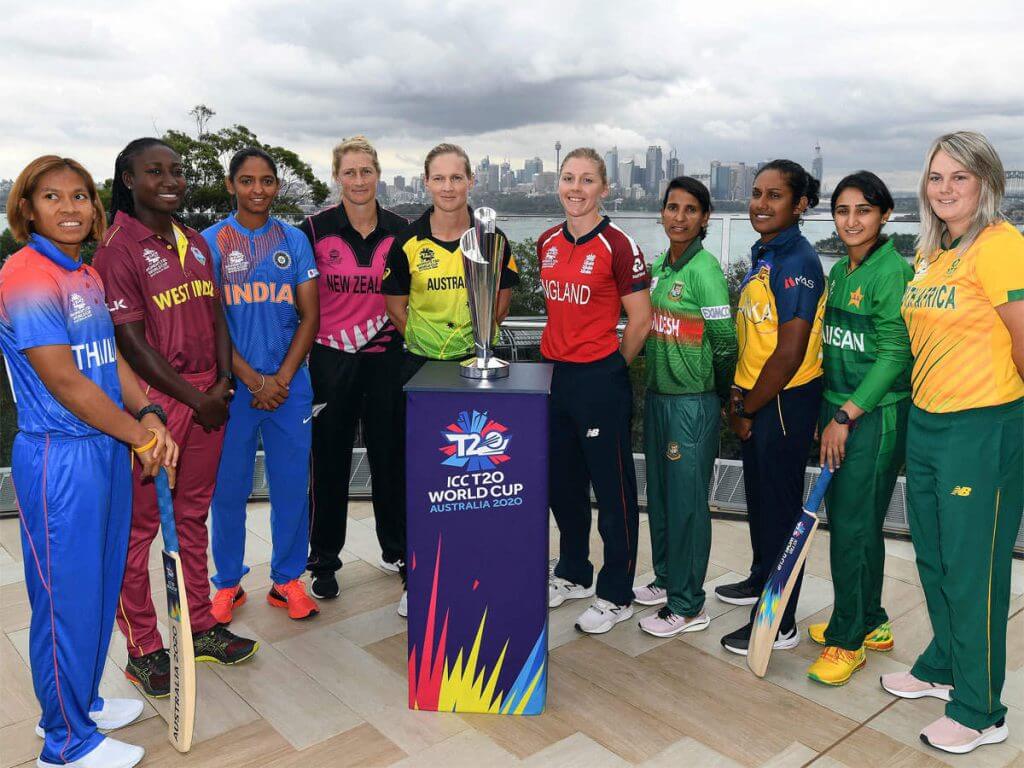
On January 14, the first Under-19 Women’s T20 World Cup will start with 16 teams. There will be four groups of teams. The top three teams from each group move on to the “Super Six,” where the teams are split into two groups of three. Group 1 will have the teams from Groups A and D, and Group 2 will have the teams from Groups B and C.
The top two teams from each group will then move on to the semi-finals, which will both be played on January 27 in Potchefstroom. The final will be held at the same place on January 29. All of the games will take place in both Benoni and Potchefstroom, which each have two places where games can be played. Both the semi-finals and the finals have a backup day.
Here are some quick facts about the 16 teams that will be there:
GROUP A
Australia
Captain: Rhys McKenna
Coach: Sarah Aley with Erin Osborne and Dulip Samaraweera as assistant coaches
Key players: Ella Hayward, Amy Smith
A lot of the team members have played in the Women’s Big Bash League (WBBL) and the Women’s National Cricket League. In the WBBL, all-rounder Jade Allen spins with her legs, Hayward spins with her offspin, Smith spins with her legs, and McKenna bowls fast for Sydney Sixers, Melbourne Renegades, Hobart Hurricanes, and Melbourne Stars. Hayward was also the Victoria Metro player with the most runs in the Under-19 Female National Championships. In WBBL 08, Brisbane Heat’s Lucy Hamilton, who bowls with her left hand, made her first appearance.
Squad: Rhys McKenna (capt), Chloe Ainsworth, Jade Allen, Charis Bekker, Paris Bowdler, Maggie Clark, Sianna Ginger, Lucy Hamilton, Ella Hayward, Milly Illingworth, Eleanor Larosa, Claire Moore, Kate Pelle, Amy Smith, Ella Wilson.
Bangladesh
Captain: Disha Biswas
Coach: Dipu Roy Chowdhury
Key players: Marufa Akter, Disha Biswas
Marufa, Dilara Akter, and Rabeya Khan have all played international sports for Bangladesh. Biswas was called up for the first time when the senior team went to New Zealand at the end of last year. She was the captain of the Under-19 team. Also getting a lot of attention is fast bowler Marufa.
Squad: Disha Biswas (capt), Shorna Akter, Rabeya Khan, Marufa Akter, Dilara Akter, Misty Rany Saha, Reya Akter Shika, Sumaiya Akter, Afia Humaira Anam Prottasha, Mst Unnoti Akter, Mst Dipa Khatun, Leky Chakma, Asrafi Yeasmin Arthy, Jannatul Maoua, Mst Eva.
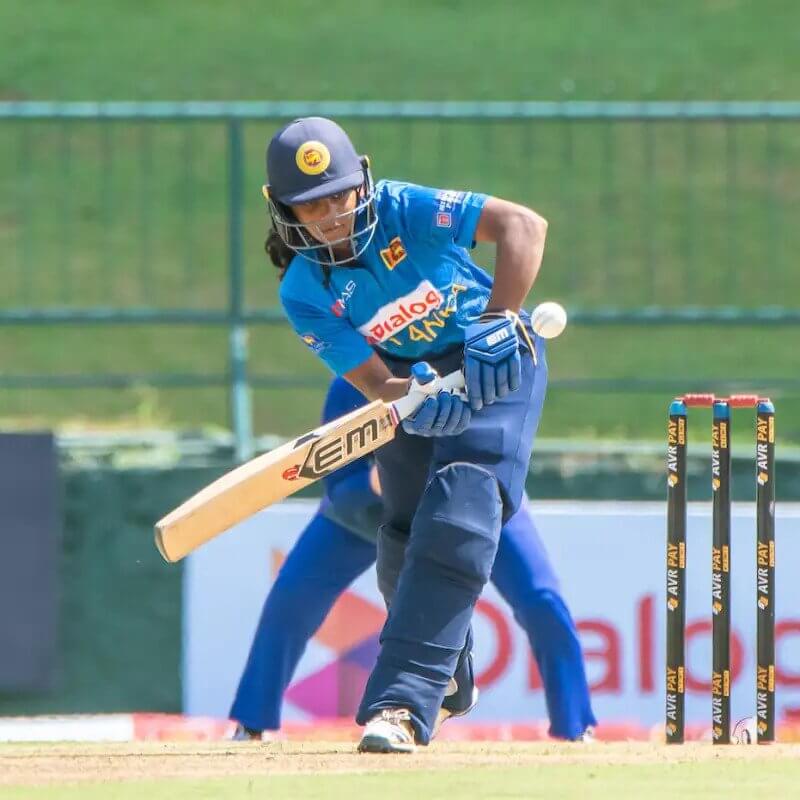
Sri Lanka
Captain: Vishmi Gunaratne
Coach: Shashikala Siriwardene
Key player: Vishmi Gunaratne, Dewmi Vihanga
The only player on the team with a cap is Gunaratne. She is known for her strokeplay. Her best T20I score was a steady 45 against India in June. The Female Under-19 Youth League was held in September of last year, and most of the players took part. Six groups competed.
Squad: Vishmi Gunaratne (capt), Dahami Sanethma, Umaya Rathnayake, Rashmi Nethranjalee, Rashmika Sewwandi, Dewmi Vihanga, Manudi Nanayakkara, Sumudu Nisansala, Pamoda Shaini, Vidushika Perera, Dulanga Dissanayake, Rishmi Sanjana, Nethmi Senarathne, Harini Perera, Vihara Sewwandi.
United States of America
Captain: Geetika Kodali
Coach: Shivnarine Chanderpaul
Key players: Geetika Kodali, Isani Vaghela
Eleven of the 15 people on the team have played cricket internationally before. Most of them were on the USA team that came in eighth place at the Women’s T20 World Cup Qualifier in September 2022. Kodali, Vaghela, and Snigdha Paul have also played in T20 leagues with players who are well-known. Last September, all three of them took part in the first Women’s Caribbean Premier League (WCPL). Last May, Kodali also took part in the Fairbreak Invitational T20 tournament.
Squad: Geetika Kodali (capt), Anika Kolan, Aditi Chudasama, Bhumika Bhadriraju, Disha Dhingra, Isani Vaghela, Jivana Aras, Laasya Mullapudi, Pooja Ganesh, Pooja Shah, Ritu Singh, Sai Tanmayi Eyyunni, Snigdha Paul, Suhani Thadani, Taranum Chopra.
GROUP B
England
Captain: Grace Scrivens
Coach: Chris Guest with former offspinner Laura Marsh and Darren Franklin as assistants
Key players: Grace Scrivens, Ryana MacDonald-Gay, Sophia Smale
Even though Freya Kemp and Alice Capsey are hurt and can’t play, England still has players who have played in The Hundred before. MacDonald-Gay and Smale’s team, Oval Invincibles, won in 2022. With their teams Welsh Fire and London Spirit, Hannah Baker and Scrivens won. MacDonald-Gay also took six wickets in a warm-up T20 game last September against the senior Indian team that was touring.
Squad: Grace Scrivens (capt) Ellie Anderson, Hannah Baker, Josie Groves, Liberty Heap, Niamh Holland, Ryana MacDonald-Gay, Emma Marlow, Charis Pavely, Davina Perrin, Lizzie Scott, Sophia Smale, Seren Smale, Alexa Stonehouse, Maddie Ward.
Pakistan
Captain: Syeda Aroob Shah
Coach: Mohsin Kamal
Key players: Shawal Zulfiqar, Syeda Aroob Shah
Pakistan didn’t choose Ayesha Naseem, who has a lot of power, but they did put together a strong team led by Aroob. Zulfiqar got the most runs in the Women’s Under-19 T20 Tournament, which took place in August 2022. In five games, she had a strike rate of 137.60 and scored 172 runs. Aroob was first in bowling with nine wickets in five games and third in run scoring with 160 runs in five innings for a strike rate of 179.78.
Squad: Syeda Aroob Shah (capt), Aliza Khan, Anosha Nasir, Areesha Noor, Eyman Fatima, Haleema Azeem Dar, Haniah Ahmer, Laiba Nasir, Mahnoor Aftab, Quratulain Ahsen, Rida Aslam, Shawal Zulfiqar, Warda Yousaf, Zaib-un-Nisa, Zamina Tahir
Rwanda
Captain: Gisele Ishimwe
Coach: Leonard Nhamburo
Key players: Gisele Ishimwe, Henriette Ishimwe
Rwanda has played in 44 T20Is, and Henriette and Gisele have each played in 44 of them. With their experience from the Under-19 circuit, they helped the Rwanda Under-19 Women win the Africa Qualifiers and make it to the first T20 World Cup. Belyse Murekatete, who is not part of the pair, has also played cricket at an international level. Henriette was also on the Barmy Army team at the Fairbreak Invitational T20 Tournament. Heather Knight was in charge of this group.
Squad: Gisele Ishimwe (capt), Merveille Uwase, Henriette Isimbi, Marie Jose Tumukunde, Giovannis Uwase, Sharila Niyomuhoza, Sylvia Usabyimana, Henriette Ishimwe, Divine Gihozo Ishimwe, Belyse Murekatete, Cynthia Uwera, Cesarie Muragajimana, Rosine Uwera, Zurafat Ishimwe.
Zimbabwe
Captain: Kelis Ndlovu
Coach: Trevor Phiri
Key players: Kelis Ndlovu, Michelle Mavunga
The team spent a month at a camp in Saphale, a far-off suburb of Mumbai, in November 2022. There, they pretended to play games and did so with teams from the area. In September 2022, at the Women’s T20 World Cup Qualifier, Zimbabwe’s all-rounder Ndlovu took the most wickets and scored the second-most runs. The only other player on this team with a cap is Mavunga.
Squad: Kelis Ndlovu (capt), Kelly Ndiraya, Kay Ndiraya, Adel Zimunhu, Natasha Mutomba, Vimbai Mutungwindu, Danielle Meikle, Tawananyasha Marumani, Michelle Mavunga, Olinda Chare, Kudzai Chigora, Betty Mangachena, Chipo Moyo, Faith Ndhlalambi, Rukudzo Mwakayeni.
GROUP C
Ireland
Captain: Amy Hunter
Coach: Glenn Querl
Key players: Amy Hunter, Georgina Dempsey In November 2021, Hunter broke Mithali Raj’s record to become the youngest women to score an ODI century. She also scored a quick 40 in November 2022 to help Ireland beat Pakistan in a T20I. Dempsey is the other player in the squad with experience of international cricket.
Squad: Amy Hunter (capt), Siúin Wood, Zara Craig, Georgina Dempsey, Rebecca Gough, Abbi Harrison, Jennifer Jackson, Joanna Loughran, Niamh MacNulty, Aimee Maguire, Kia McCartney, Ellie McGee, Julie McNally, Freya Sargent, Annabel Squires.
Indonesia
Captain: Ni Luh Dewi
Coach: Nuwan Shiroman
Key players: Ni Kadek Ariani, Ni Luh Dewi, Lie Qiao
Indonesia got into the first Under-19 Women’s T20 World Cup by beating PNG 2-1 in the East Asia-Pacific Qualifier. In November, they won a series against Singapore XI by a score of 3-0. Ariani, who bats first, has been their most important bowler, and Dewi has helped in the middle order.
Squad: Ni Luh Dewi (c), Thersiana Penu Weo, Ni Kadek Ariani, Yessny Djahilepang, Sang Ayu Puspita Dewi, Lie Qiao, I Gusti Pratiwi, Ni Kadek Murtiari, Ni Putu Cantika, Ni Kadek Dwi Indriyani, Desi Wulandari, Ni Made Suarniasih, Gusti Ayu Ratna Ulansari, Dewa Ayu Sasrikayoni, Kadek Ayu Kurniartini.
New Zealand
Captain: Izzy Sharp
Coach: Sara McGlashan
Key players: Georgia Plimmer, Fran Jonas, Kayley Knight
Plimmer, Jonas, and Isabella Gaze are all members of the team who have played for their countries before. Knight got the most wickets for the New Zealand Women’s Development team when they played India Under-19 in T20s in Mumbai last year. They had also played against the Under-19 West Indies team, and many of them had played in the Hallyburton Johnstone Shield, which is New Zealand’s best one-day competition for women.
Squad: Izzy Sharp (capt), Olivia Anderson, Anna Browning, Kate Chandler, Natasha Codyre, Isabella Gaze, Antonia Hamilton, Abigail Hotton, Fran Jonas, Louisa Kotkamp, Kayley Knight, Paige Loggenberg, Emma McLeod, Georgia Plimmer, Tash Wakelin.
West Indies
Captain: Ashmini Munisar
Coach: Steve Liburd
Key players: Jannillea Glasgow, Trishan Holder
In Visakhapatnam, the West Indies played a series with the India Under-19 A and B teams and Sri Lanka. After that, they played a couple of games in Navi Mumbai against the New Zealand Women’s Development team. Their worst skill was batting, which was also their weakest point. The only person on the team who has played for her country before is Holder. Last year, at the Commonwealth Games, she played her first Twenty20 International for Barbados. Djenaba Joseph has played four T20Is for the senior team, and Glasgow has been added to the West Indies squad but hasn’t played an international yet.
Squad: Ashmini Munisar (capt), Asabi Callendar, Jahzara Claxton, Naijanni Cumberbatch, Earnisha Fontaine, Jannillea Glasgow, Realanna Grimmond, Trishan Holder, Zaida James, Djenaba Joseph, K D Jazz Mitchell, Shalini Samaroo, Shunelle Sawh, Lena Scott, Abini St Jean.
GROUP D
India
Captain: Shafali Verma
Coach: Nooshin Al Khadeer
Key players: Soumya Tiwari, Hurley Gala, Shabnam MD apart from Shafali and Richa Ghosh
The rest of the team has a lot of cricket experience, except for Shafali and Ghosh. Between them, they have played in 121 international matches. Last November, they played in the Under-19 Women’s Challenger Trophy, a Quadrangular series with Sri Lanka and the West Indies, a five-match T20 series against the New Zealand Development side, and then five T20s in Pretoria against South Africa.
Squad: Shafali Verma (capt), Shweta Sehrawat, Richa Ghosh, G Trisha, Soumya Tiwari, Sonia Mendhiya, Hurley Gala, Hrishita Basu, Sonam Yadav, Mannat Kashyap, Archana Devi, Parshavi Chopra, Titas Sadhu, Falak Naz, Shabnam MD.
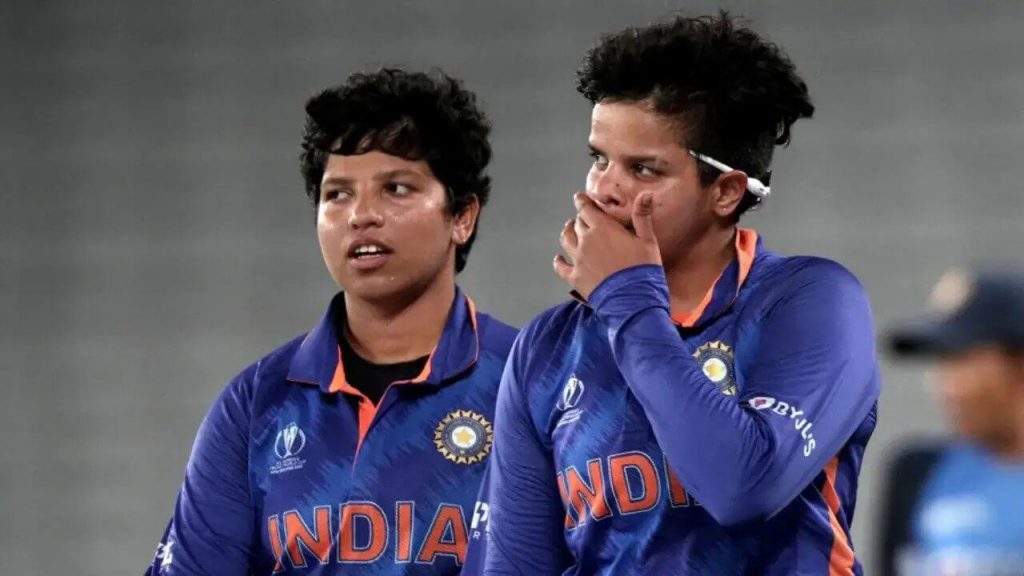
Scotland
Captain: Katherine Fraser
Coach: Peter Ross
Key players: Ailsa Lister, Katherine Fraser
Mark Coles thought Fraser would go on to bigger and better things when he was Scotland’s head coach. Only Lister and Olivia Bell, besides Fraser, have played for their country outside of their home country. At the Women’s T20 World Cup Qualifier in September, Scotland came in sixth. Fraser and Lister both had the same number of wickets, and Lister was third on Scotland’s list of run scorers. In an unofficial warm-up game before the Under-19 World Cup, they lost to the United States, but in their first official warm-up game, they got even.
Squad: Katherine Fraser (capt), Ailsa Lister, Molly Barbour-Smith, Olivia Bell, Darcey Carter, Maryam Faisal, Maisie Maceira, Orla Montgomery, Niamh Muir, Molly Paton, Niamh Robertson-Jack, Nayma Sheikh, Anne Sturgess, Emily Tucker, Emma Walsingham.
South Africa
Captain: Oluhle Siyo
Coach: Dinesha Devnarain
Key player: Seshnie Naidu
Cricket This year, Devnarain coached the Under-19 team, which was the fourth team in South Africa’s Women’s Super League T20. Before the T20 World Cup, India beat South Africa’s Under-19 team four times in Pretoria. During the whole series, Naidu’s leg-spin was very good, and he took seven wickets. But everyone will be watching them bat at the T20 World Cup.
Squad: Oluhle Siyo (capt), Elandri Janse Van Rensburg, Simone Lourens, Anica Swart, Karabo Meso, Madison Landsman, Kayla Reyneke, Jenna Evans, Miane Smit, Ayanda Hlubi, Seshnie Naidu, Refilwe Moncho, Mona Lisa Legodi, Nthabiseng Nini, Jemma Botha.
United Arab Emirates
Captain: Theertha Satish
Coach: Najeeb Amar
Key players: Mahika Gaur, Theertha Satish, Vaishnave Mahesh
Six of the women on the team played in the Women’s Asia Cup last year. Theertha had the third-most runs in all women’s T20Is in 2022, and Vaishnave was tied for third with 29 wickets in all women’s T20Is.
Squad: Theertha Satish (capt), Vaishnave Mahesh, Samaira Dharnidharka, Lavanya Keny, Sanchin Singh, Rinitha Rajith, Indhuja Nandakumar, Siya Gokhale, Mahika Gaur, Avanee Sunil Patil, Archara Supriya, Rishitha Rajith, Geethika Jyothis, Sanjana Ramesh, Ishitha Zehra.
Cricket
1000 Runs in ODIs: Kohli’s Cricket Legacy
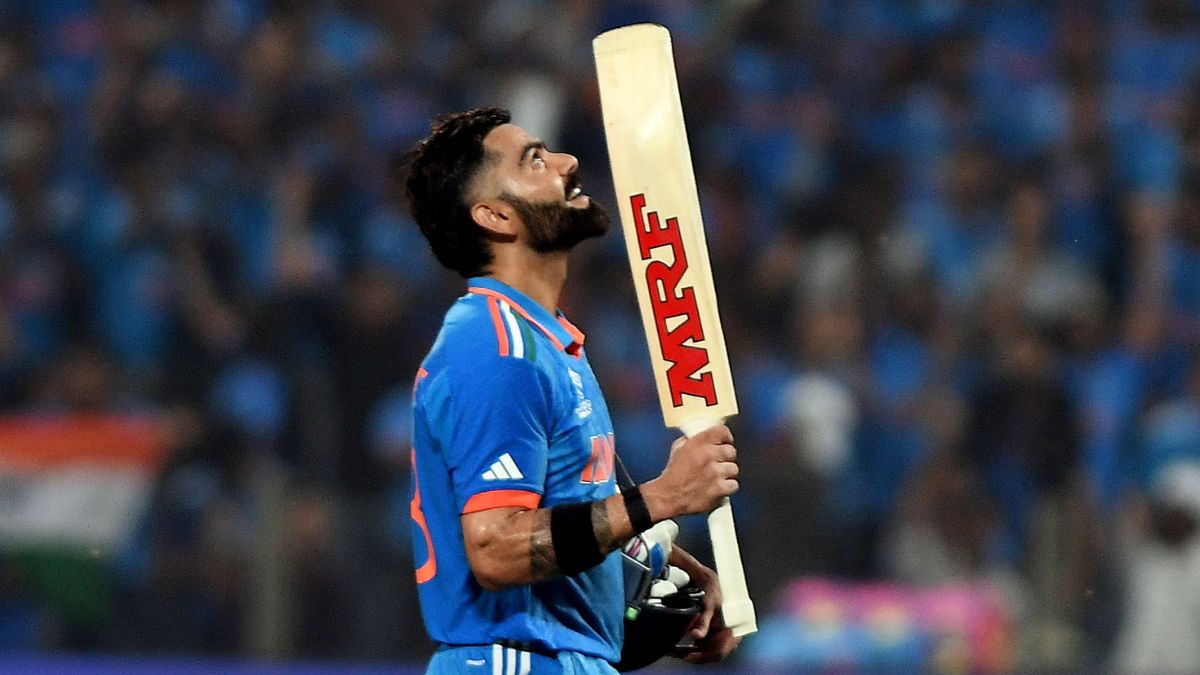
On Thursday, November 2, Virat Kohli achieved an accomplishment. He became the batsman to surpass 1000 runs in ODIs in 2023, following in the footsteps of Shubman Gill and Rohit Sharma. Not that,. He also joined Rohit Sharma, Shubman Gill, and Pathum Nissanka as the fourth players to achieve this impressive record in the 50-over format within the same year.
Stepping into History with 1000 Runs in ODIs
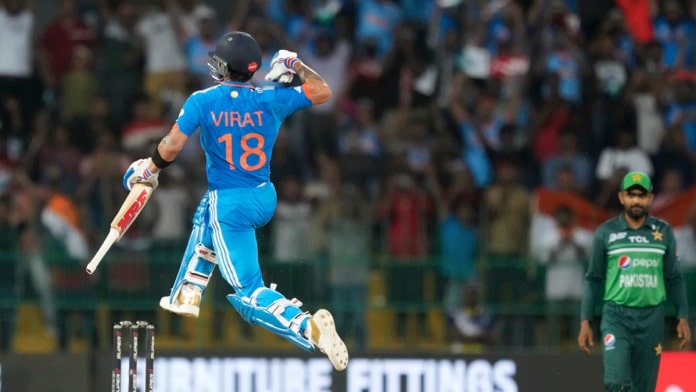
Entering the realm of history, Kohli’s unwavering determination and exceptional skills were put on display during his match in 2023. Notably, the cricket maestro, now 34 years old, made an indelible impact by surpassing Sachin Tendulkar‘s record, securing the most number of years with 1000 runs in ODIs. Kohli’s consistent ability to perform at such an exceptional level has been a defining characteristic of his illustrious career, as he had previously achieved this monumental milestone in 2011, 2012, 2013, 2014, 2017, 2018, and 2019, before accomplishing it once again in the present year of 2023.
Sachin Tendulkar with god of cricket Virat Kohli pic.twitter.com/zmztejNBBB
— Kevin (@imkevin149) November 2, 2023
An Unforgettable Journey
In an intense World Cup 2023 clash against Sri Lanka at the renowned Wankhede Stadium in Mumbai, Virat Kohli’s pursuit of this historic milestone was realized with an impressive 34 runs. Despite facing challenges, including a rare duck against England at the Ekana Stadium in Lucknow, his overall performance throughout the year has been nothing short of spectacular.
Kohli’s memorable journey was highlighted by an unbeaten century during India’s triumphant seven-wicket victory against Bangladesh at the Maharashtra Cricket Association (MCA) Stadium in Pune. Adding to his illustrious record, he solidified his stature with a brilliant 95 runs, making a significant contribution to India’s thrilling four-wicket win over New Zealand led by Tom Latham at the Himachal Pradesh Cricket Association (HPCA) Stadium in Pune.
Cricket
Shaheen Shah Afridi: Fastest to 100 ODI Wickets
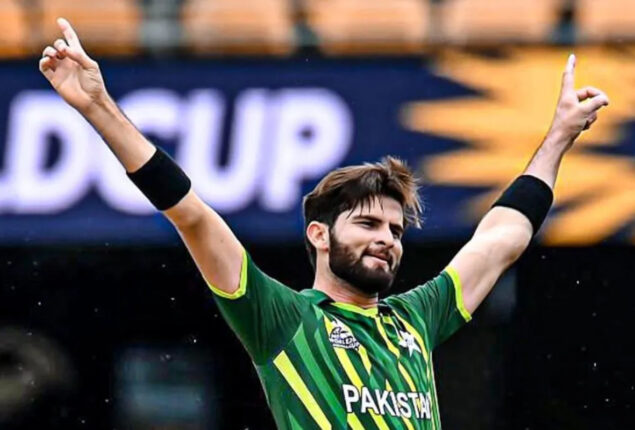
Shaheen Shah Afridi, on Tuesday, October 31, achieved a remarkable feat, becoming the third fastest bowler to secure 100 wickets in ODIs. His outstanding performance during Pakistan’s World Cup 2023 match against Bangladesh at the renowned Eden Gardens in Kolkata led to this historic accomplishment.
A Landmark Moment
In the thrilling encounter, Shaheen clinched his 100th wicket in only his 51st match, dismissing Tigers’ opening batter Tanzid Hasan Tamim. The left-arm fast bowler displayed exceptional skill as he struck Tamim on the pads, prompting the on-field umpire to raise his finger. Despite Tamim’s referral to the third umpire using the Decision Review System (DRS), the replays confirmed the ball crashing into the stumps, upholding the on-field decision. Bangladesh lost their first wicket with the scoreboard reading 0 in just 0.5 overs.
Shaheen Afridi soars high yet again with another feat to his name 🦅#CWC23 | #PAKvBAN pic.twitter.com/IlQQ6P5xYK
— ICC Cricket World Cup (@cricketworldcup) October 31, 2023
Surpassing Preceding Records
Shaheen Shah Afridi not only secured this feat in record time but also outshone the accomplishments of esteemed bowlers preceding him. He surpassed the record of the fastest pacer, previously held by Mitchell Starc, who attained the milestone in August 2016 during an ODI against Sri Lanka at the R. Premadasa Stadium in Colombo.
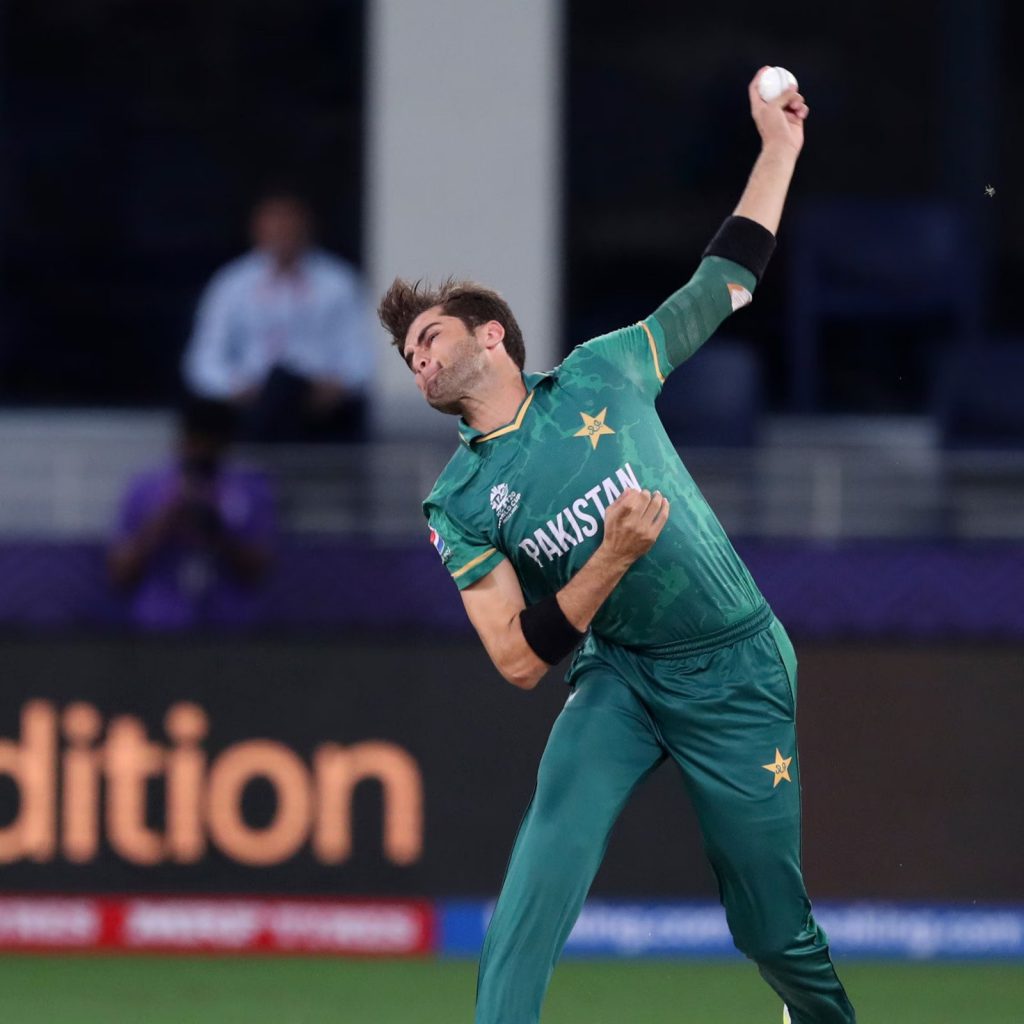
Legacy of Excellence
Moreover, Shaheen shattered the long-standing record held by Saqlain Mushtaq, becoming the fastest Pakistani bowler to claim 100 wickets in ODIs. Saqlain had set this record on May 12, 1997, during an ODI against Sri Lanka in Gwalior. It is notable that among the Pakistani fast bowlers, the accomplished Shaheen Shah Afridi follows in the footsteps of the legendary Waqar Younis, who achieved the 100-wicket mark back in February 1993 against Zimbabwe in Sharjah.
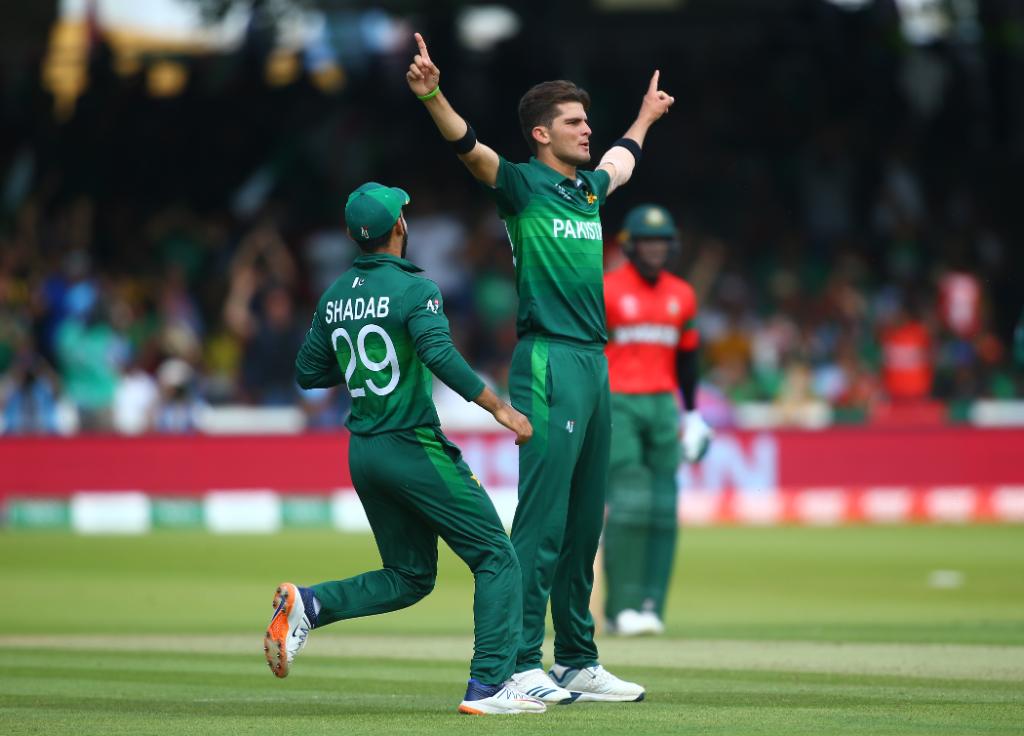
Beyond ODIs
Demonstrating his prowess beyond ODIs, Shaheen has made significant contributions in Tests and T20Is as well. Since his debut in 2018, he has garnered 105 wickets in Tests and 64 wickets in T20Is. His exceptional journey began with a strong performance in the U19 World Cup in New Zealand. Notably, he played a pivotal role in Lahore Qalandars’ consecutive victories in the Pakistan Super League (PSL).
A Testament to Talent and Dedication
Shaheen Shah Afridi’s rapid rise to 100 ODI wickets within 51 matches underlines his exceptional talent and unwavering dedication to the sport. As he continues to leave an indelible mark on the cricketing world, his journey serves as an inspiration for aspiring cricketers worldwide. With his remarkable achievements, Afridi has solidified his place in the annals of cricket history, etching his name as one of Pakistan’s most formidable and promising fast bowlers.
Cricket
ICC World Cup: Shoaib Akhtar says, ‘Mai India ki tareef kyu na karu’

Former Pakistan fast bowler Shoaib Akhtar has recently expressed admiration for India’s dominant performance in the ongoing 2023 ICC World Cup. With India securing victories in all six matches, Akhtar highlighted the team’s exceptional display across various aspects of the game. Although the recent batting performance against England in Lucknow was relatively modest, India’s fierce bowling attack, led by Mohammed Shami and Jasprit Bumrah, proved instrumental in securing a remarkable win. This triumph not only solidified India’s leading position on the points table but also exacerbated England’s struggles in the tournament, leaving them virtually eliminated.
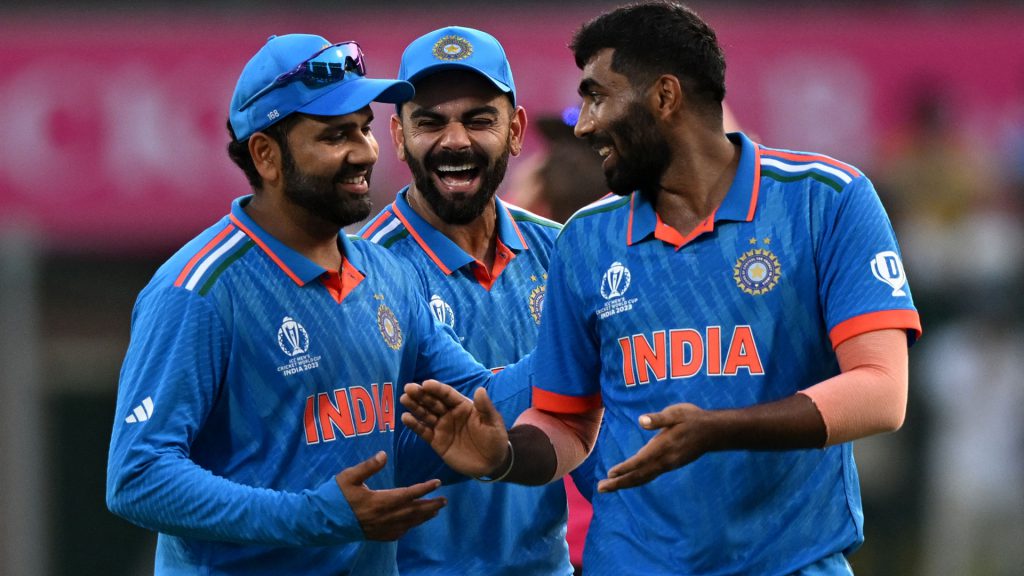
India’s Remarkable Bowling Transformation
In his analysis, Akhtar emphasized the transformative impact of Shami’s inclusion in India’s playing eleven following Hardik Pandya’s injury. Acknowledging Shami’s outstanding performances against New Zealand and England, Akhtar credited India’s ability to win matches through their bowling prowess, showcasing a shift from their traditional reliance on batting strength. He commended the collective effort of the Indian bowling unit, particularly recognizing the strategic brilliance of fast bowler Bumrah.
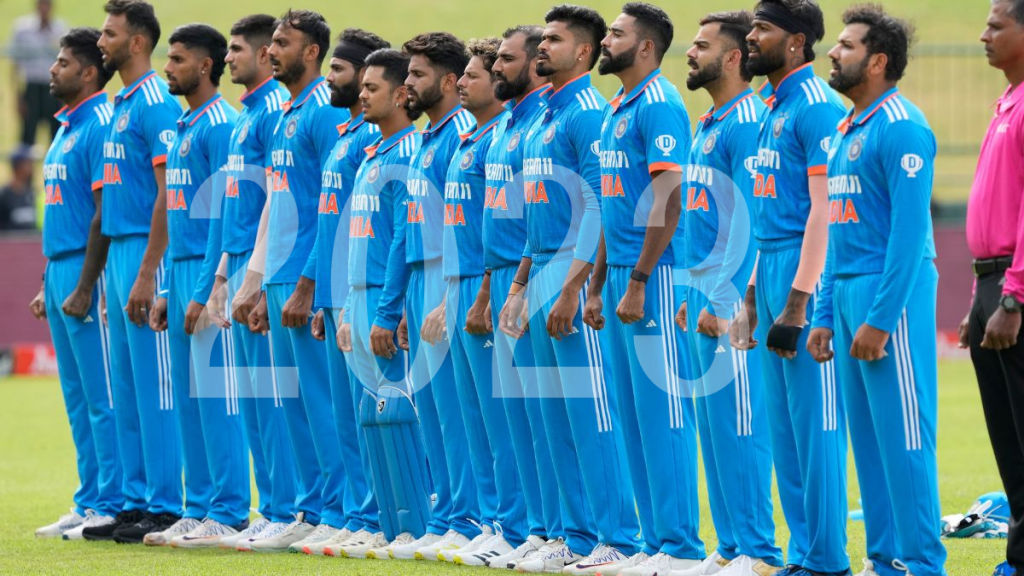
India’s Path to World Cup Glory
Looking ahead, Akhtar voiced his confidence in India’s potential to secure their third ODI World Cup trophy, highlighting the team’s upcoming matches against Sri Lanka, South Africa, and the Netherlands. Expressing optimism, he emphasized the significance of maintaining their unbeaten streak en route to the final, setting the stage for a potential historic ICC World Cup victory. However, Akhtar cautioned against compromising the successful bowling unit once Pandya returns to full fitness, warning against the potential detriment of a partially fit Pandya’s inclusion at the expense of a bowler.
Akhtar’s Praise for India and its Response to Criticism
Addressing skepticism surrounding his praise for the Indian team, Akhtar reiterated the exceptional nature of India’s performance, particularly in their ability to defend a modest total with a significant margin of victory. Undeterred by criticism, Akhtar reaffirmed his admiration for India’s exceptional cricketing prowess, urging acknowledgment and appreciation of their commendable achievements.
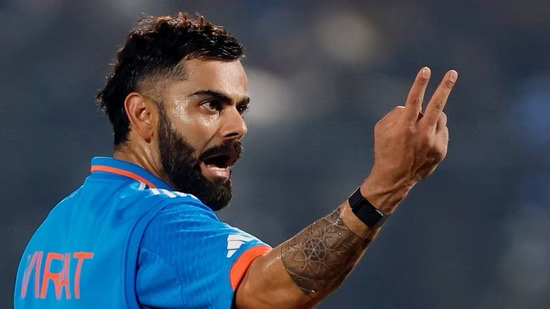
Shoaib Akhtar’s Perspective on Virat Kohli
Shifting focus, Akhtar’s history of praise extends beyond team performances to individual players, notably including former Indian team captain Virat Kohli. Reminiscing on Kohli’s resilience during a challenging phase in his career, Akhtar highlighted the pivotal role played by Kohli’s consistent century-scoring performances, leading to India’s victories. Recognizing Kohli’s contribution to the team’s success, Akhtar emphasized the significance of Kohli’s monumental centuries during crucial chases, solidifying his status as a crucial asset for the Indian cricket team.
In a comparison between Kohli and the legendary Sachin Tendulkar, Akhtar acknowledged Tendulkar’s status as one of the greatest batsmen while highlighting the challenges Tendulkar faced as a captain. Drawing parallels, Akhtar expressed confidence in Kohli’s eventual resurgence, expecting him to return to his prolific scoring form once he finds his equilibrium.
In summary, Akhtar’s acknowledgment of India’s exceptional performance and his recognition of individual players’ contributions underscore the team’s formidable presence in the 2023 ICC World Cup, setting the stage for a potential historic triumph in the coming days.

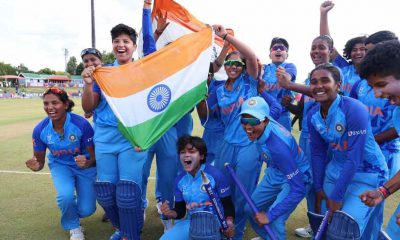

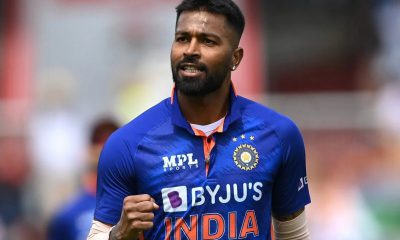

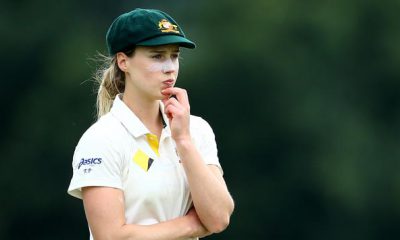

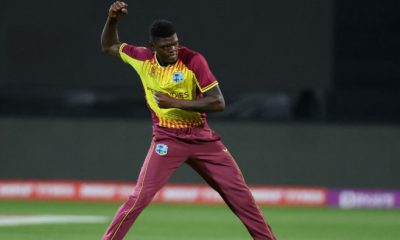



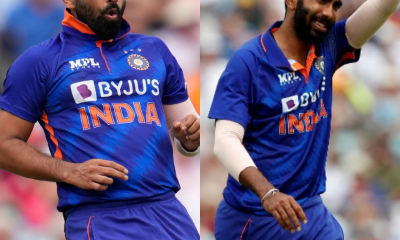







You must be logged in to post a comment Login